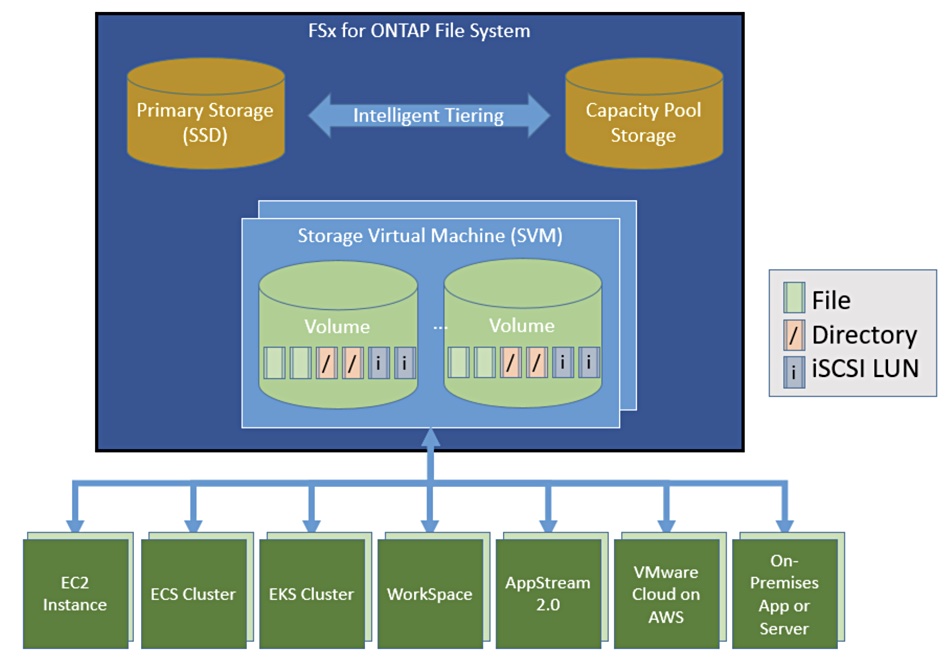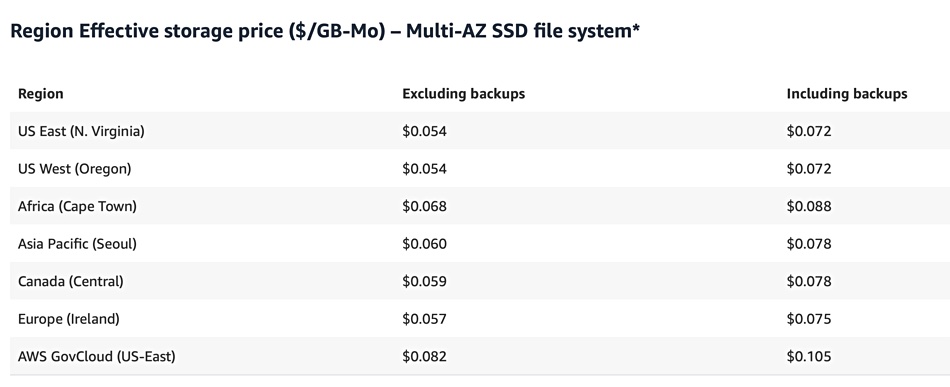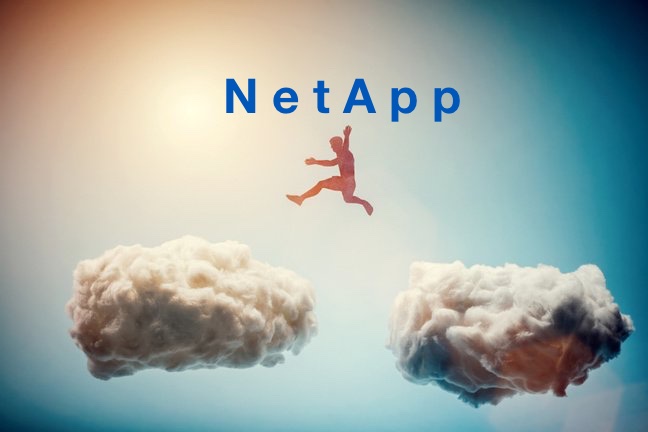NetApp and AWS have a strategic deal which has put the ONTAP file system natively into AWS as a managed service with FSx for ONTAP.
Updated 4 Sep 2021 with Octavian Tanese comment.
It is a fully-managed ONTAP file system in AWS, with the whole array of ONTAP APIs, data reduction and data protection features, and joins the existing Amazon FSx for Lustre and FSx for Windows File Server.
AWS’s Wayne Duso, VP for AWS Storage, Edge and Data Governance, said in the AWS Storage Day announcement: “You give up nothing.” That means you can move data sets from on-premises ONTAP environments to FSx for ONTAP in the AWS cloud with no changes. ONTAP features such as thin provisioning, FlexClone, SnapMirror and SnapVault are available. The data can be snapshotted using native ONTAP snaps, replicated, and also backed up to S3 with FSx backup.
Once the ONTAP dataset is in AWS then AWS functionality can be used to process data in it. There is integration with AWS tools for automation and monitoring.
AWS is partnering with Accenture to help enterprises adopt and migrate to FSx for ONTAP.
A blog by AWS Chief Evangelist Jeff Barr claims that, with FSx for ONTAP: “You get the popular features, performance, and APIs of ONTAP file systems with the agility, scalability, security, and resiliency of AWS, making it easier for you to migrate on-premises applications that rely on network-attached storage (NAS) appliances to AWS.”
Barr writes: “If you are migrating, you can enjoy all of the benefits of a fully-managed file system while taking advantage of your existing tools, workflows, processes, and operational expertise. If you are building brand-new applications, you can create a cloud-native experience that makes use of ONTAP’s rich feature set. Either way, you can scale to support hundreds of thousands of IOPS and benefit from the continued, behind-the-scenes evolution of the compute, storage, and networking components.”

There are two storage tiers:
Primary Storage uses SSDs and is designed to hold the part of your data set that is active and/or sensitive to latency. You can provision up to 192TiB of primary storage per file system.
Capacity Pool Storage grows and shrinks as needed, and can scale to pebibytes. It is cost-optimised and designed to hold data that is accessed infrequently.
You can create one or more Storage Virtual Machines (SVMs) in an FSx for ONTAP file system, each of which supports one or more Volumes. Volumes can be accessed via NFS, SMB, or as iSCSI LUNs for shared block storage.
You can check out FSx for ONTAP pricing on an AWS web page. Pricing reflects five component cost elements: SSD capacity, SSD IOPS, Capacity Pool usage, throughput capacity, and backups.
Pricing varies by AWS region as well and here is an illustrative table from the AWS web page:

NetApp’s Octavian Tanese, SVP Hybrid Cloud Engineering, wrote on LinkedIn: “[FSx for ONTAP] leverages Amazon’s EBS SSD-backed volumes. It combines up to twelve IO1 volumes, scaling up to 192 TB of capacity per managed cluster. Looking ahead, there will be support for other type of AWS storage and deeper integration with the SnapCenter Service application integration software.”
Comment
This deal between NetApp and AWS is a tremendous win for NetApp, giving yet more heft to its data fabric story. ONTAP is now a single file system product covering the on-premises, private cloud, public cloud and hybrid cloud worlds as far as AWS is concerned.
FSx for ONTAP is a step beyond Cloud Volumes for ONTAP (CVO), which is a cloud data management system available on AWS, Azure and GCP. The customer manages, deploys and licenses CVO, whereas AWS presents FSx ONTAP as a fully-managed service, taking the CVO management burden away.








